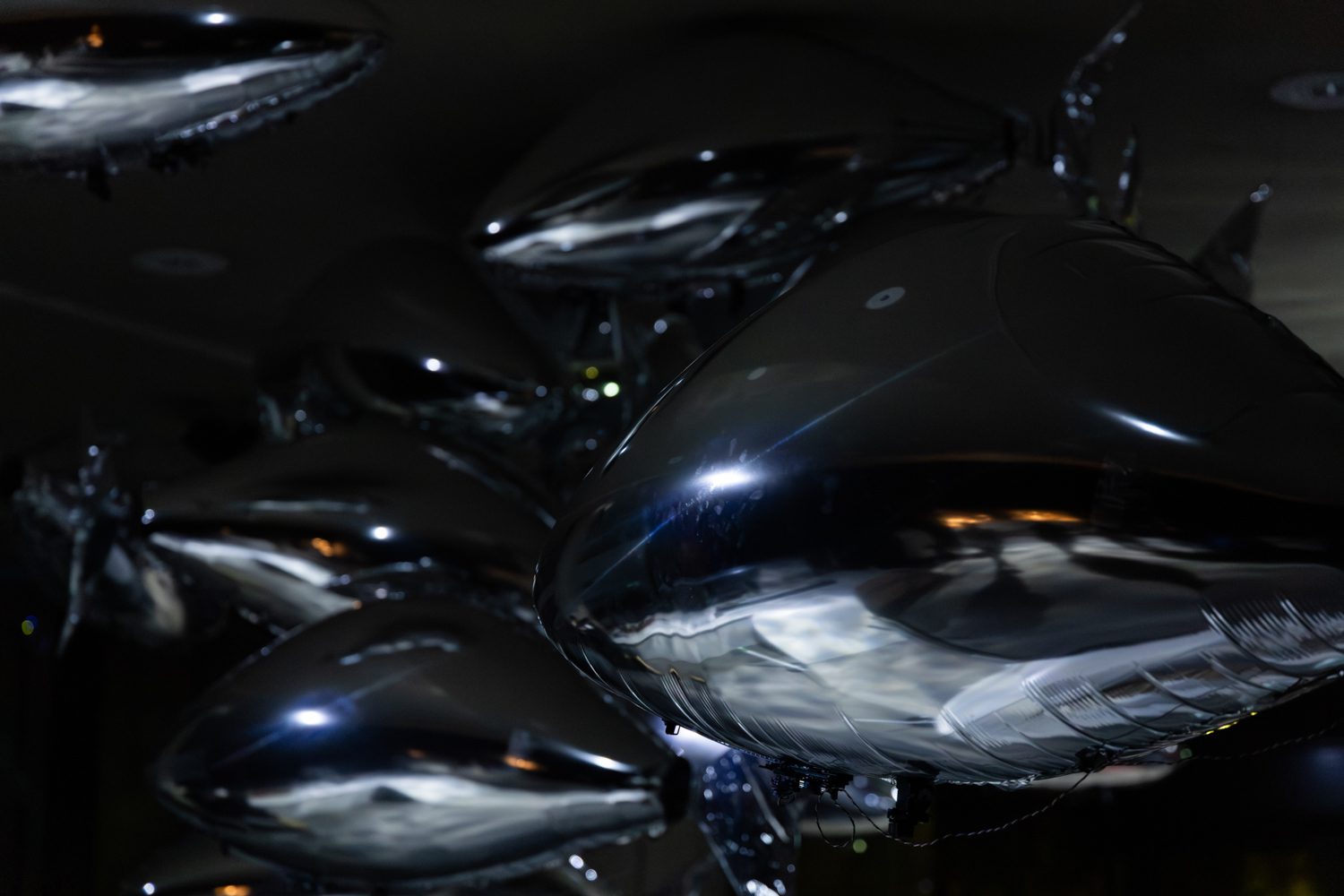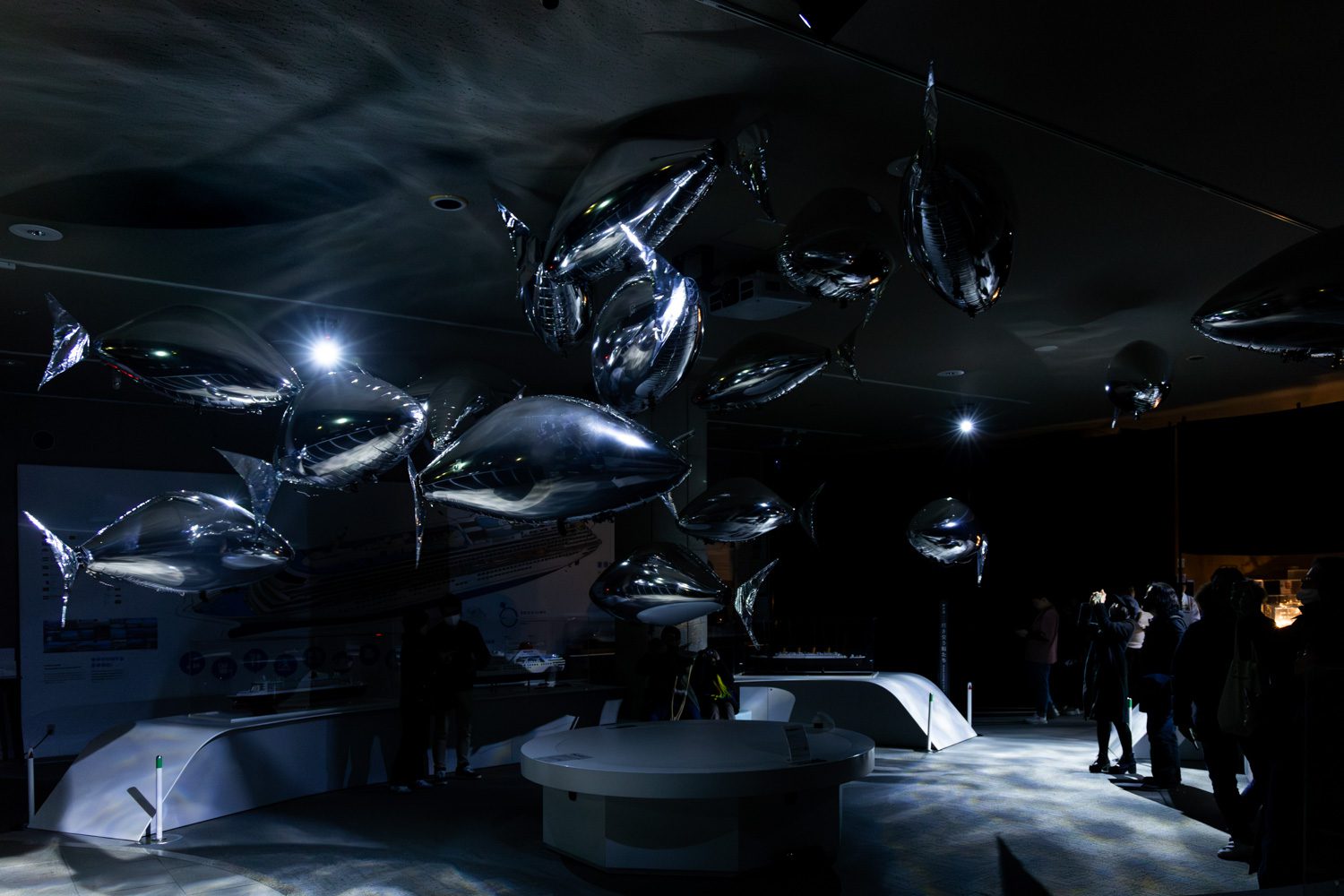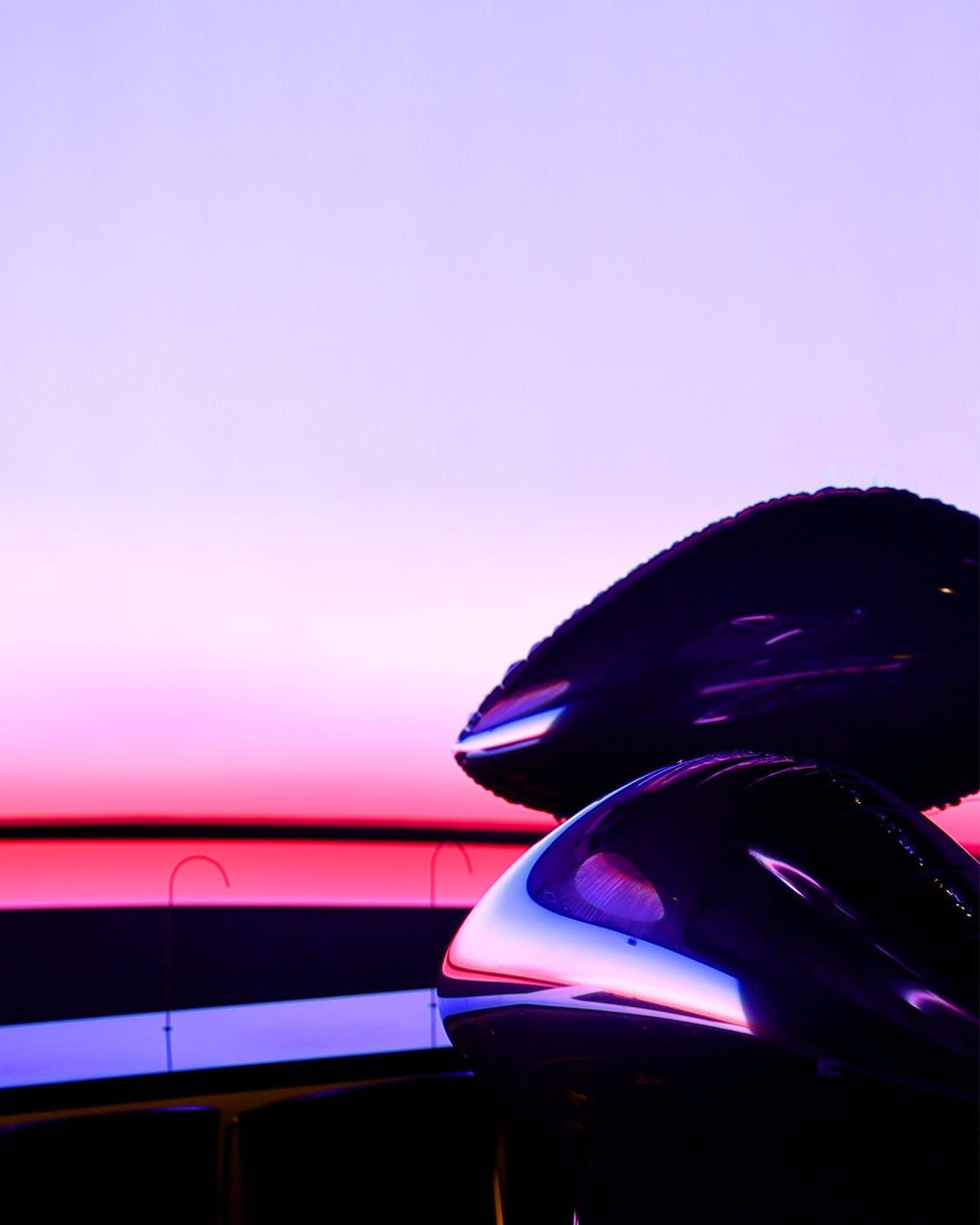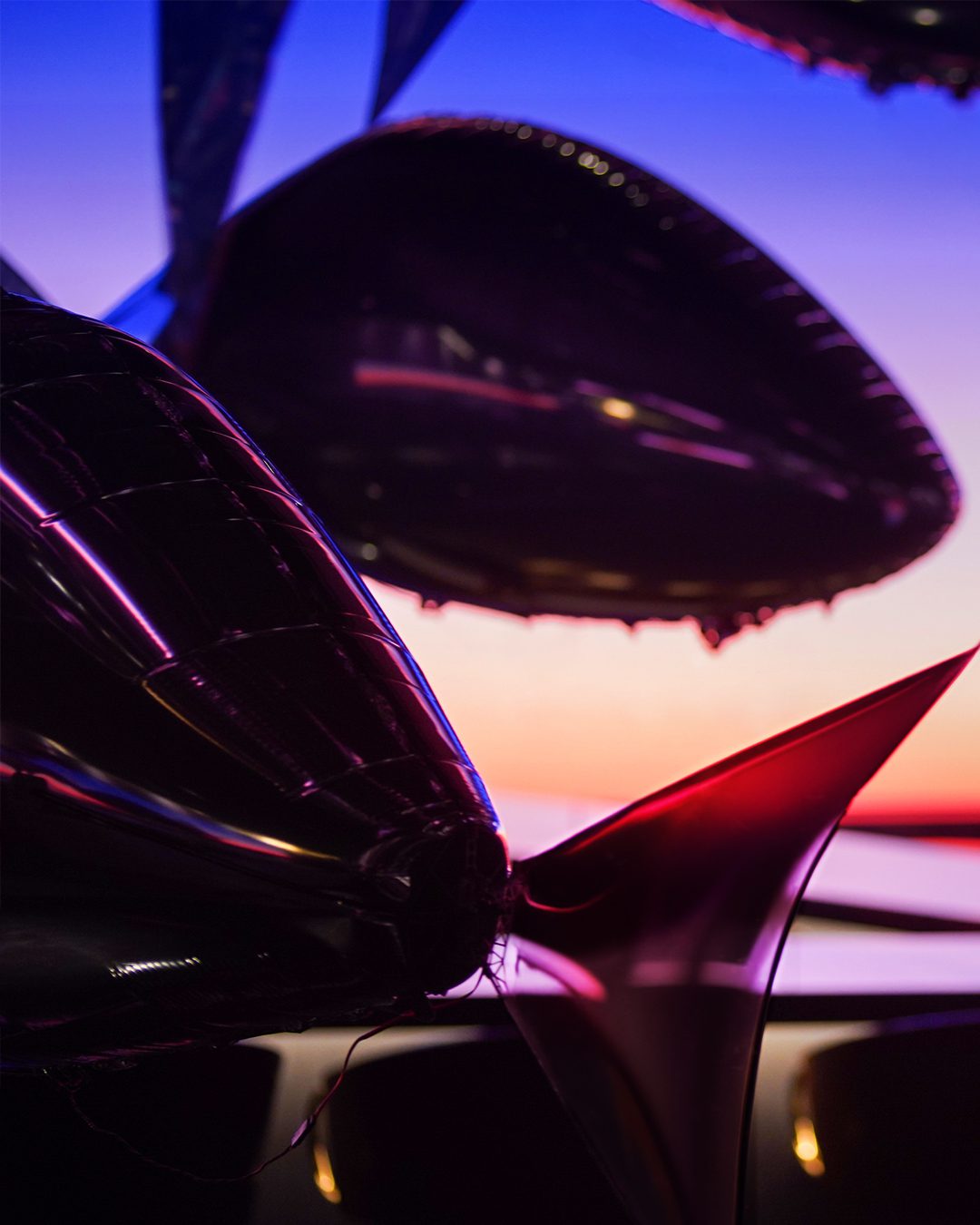GLIDING EFFORTLESSLY THROUGH THE AIR, A SHIMMERING SCHOOL OF SILVERFISH DEFIES BOTH GRAVITY AND EXPECTATION. THIS ART INSTALLATION BY BIT.STUDIO INVITES VIEWERS INTO AN IMMERSIVE REALM WHERE SPATIAL IMAGINATION TRANSCENDS THE VIRTUAL
TEXT: SURAWIT BOONJOO
PHOTO COURTESY OF BIT.STUDIO
(For Thai, press here)
Gliding effortlessly through the air, a shimmering school of silver fish defies both gravity and expectation. FLOCK OF, an installation by bit.studio, invites viewers into an immersive realm where spatial imagination transcends the virtual. Committed to melding art with technology, this collective of creative technologists draws on a rich integration of physics, engineering, and design expertise. art4d recently engaged in a conversation with Kiattiyot Panichprecha, the founder and lead designer/developer of the firm. Reflecting on the genesis of FLOCK OF, Kiattiyot shared, “We wanted to craft an installation that makes the audience feel intrinsically connected—to step inside the piece and embark on a novel experience that plunges them into a space they’ve never encountered before.”
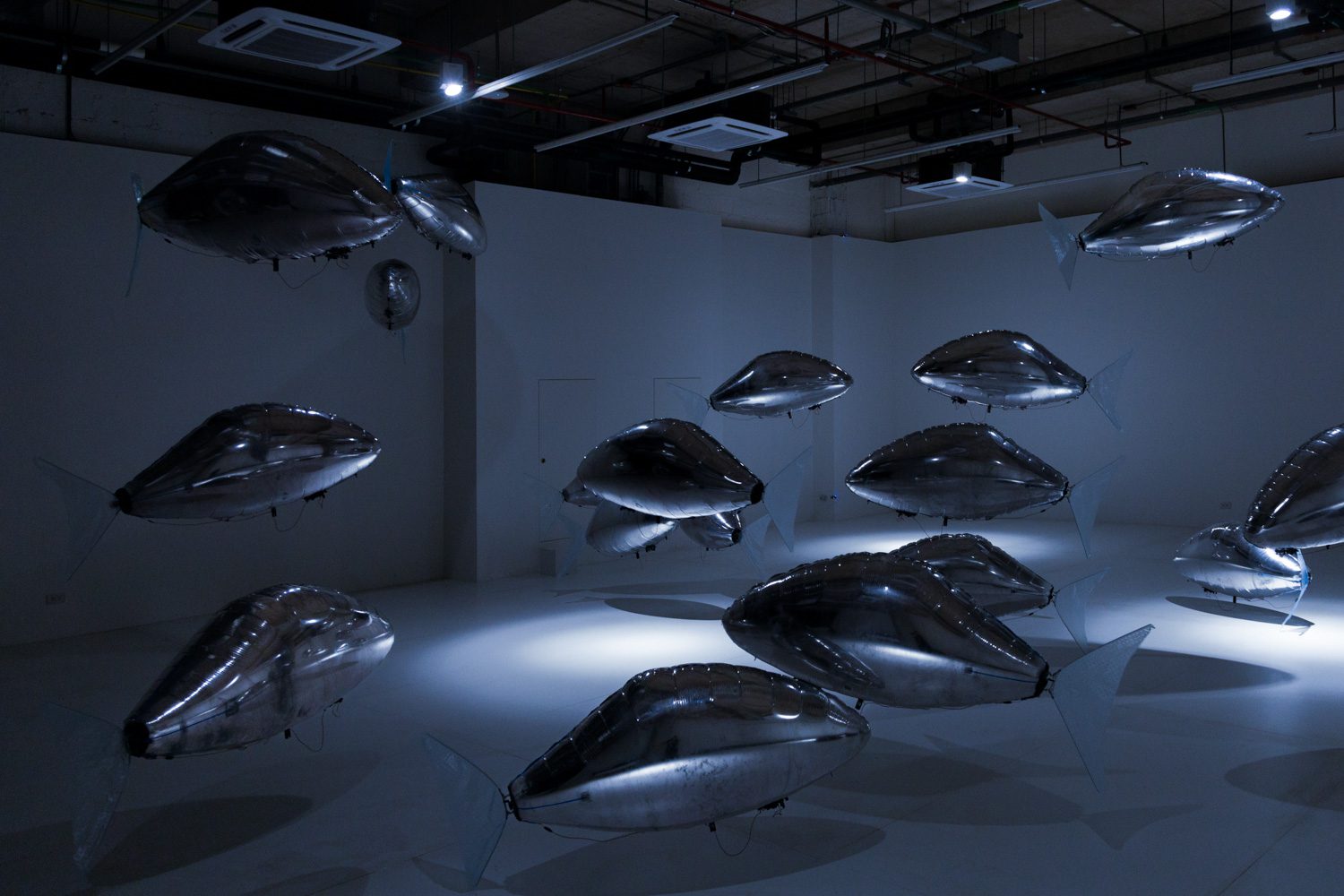
True Digital Park, Bangkok, Thailand
An otherworldly atmosphere unfolds as the silver fish navigate the open air, behaving contrary to their natural confines beneath the waves. This subversion raises open-ended questions for contemplation. The deliberate blending of reality and virtuality induces cognitive dissonance—the uneasiness in spatial perception, prompting us to challenge the limits of our thoughts and reflect on the nature of transformation. Much like these mechatronic fish forging new identities within unfamiliar spaces, the installation poses profound inquiries about the meaning of existence and the pursuit of transcending personal limitations. Immersed in the swirling paths of the fish, viewers are invited to touch and delight in the surreal spectacle before them.
“Drones naturally came to mind since we were envisioning a piece that could fly or float around people while being controllable,” Panichprecha explained. “However, the harshness of propellers and loud engines didn’t align with our focus on emotional resonance in the design. Such intensity would discourage audiences from approaching the piece. So, we reconsidered: What kind of robotic element could fulfill our vision and still be something that people find inviting? This led us to start with something inherently non-threatening like balloons. From there, we delved into researching control mechanisms to enable floating and directed movement.”
The fish’s ability to move through the air along predetermined paths—even when separated from the school—is the result of a collaborative effort between teams of technology experts and computer engineers. Integrated into the fabric of the exhibit space are sensors that emit radio waves, strategically placed to communicate with the electronic interfaces adorning each fish. Prior to this, bespoke computer programs were developed to govern their buoyancy and choreograph their dance of directional patterns to complement the setting of each display. Moreover, the nuances of the fish’s velocity and fluidity are aspects the designers place significant emphasis on, aiming to mimic the natural gestures and schooling behavior of fish under the sea.
This installation, originally unveiled at True Digital Park under the banner “FLOCK OF… Discover the supernatural nature of floating fish,” made its international journey to Japan’s ‘MEYA MEYA’ at Kobe Maritime Museum, before gracing the Kani Lab restaurant in South Korea—a place where culinary art meets visual media. Most recently, in September, it took part in the Ars Electronica Festival 2024 in Linz, Austria, an avant-garde festival themed ‘HOPE – who will turn the tide.’ Intriguingly, the piece adjusts its mode of interaction and presentation to fit seamlessly within each new environment in versatile and continuous ways. For example, while the piece was first introduced as a cutting-edge artwork with an engaging creative concept, its role shifted in the festival context to underscore its status as a groundbreaking technological innovation.
In one sense, the adaptation of spaces—often accompanied by embellishments and modifications, enabled the installation’s capacity to morph its communicative style to resonate with each unique venue. Not only does this underscore its interpretative versatility but also its intent to maintain a dynamic void, perpetually open to something new. This approach allows the ‘FLOCK OF’ installation to be considered and interpreted from various perspectives. Upon further contemplation, it becomes even more intriguing that this might be a ‘flock’ of things (not necessarily fish), calling for the audience to interact, ponder, connect, and expand the definitions of intentionally omitted elements. Within this crafted ambiance, one is left to question: have viewers submerged underwater alongside the fish, were the fish swimming and floating, or have the fish made us acutely aware of the atmospheric weight we’ve never been able to feel before?

True Digital Park, Bangkok, Thailand

 True Digital Park, Bangkok, Thailand
True Digital Park, Bangkok, Thailand 

